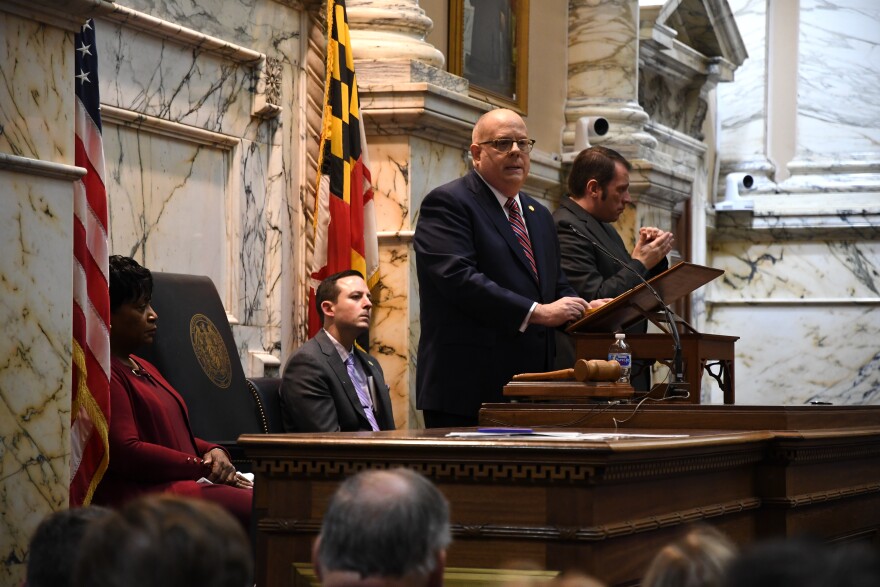In his annual State of the State address Wednesday, Gov. Larry Hogan urged the members of the General Assembly to address Baltimore’s soaring crime rates, calling them an “urgent crisis.”
Though every issue that comes before the legislature is important, he said, “none of them are as important as addressing the out of control violent crime, the shootings and murders, that are destroying Baltimore City.
Just in the 29 days since the legislative session began, 60 people have been shot, 23 killed, he said.
“The time has come for Baltimore City to finally take back its streets and communities once and for all,” he said. “And they simply cannot do it without decisive action from this General Assembly.”
His primary plan for reducing the violence is what he calls the “Violent Firearm Offenders Act of 2020.” The bill increases mandatory minimum sentences for certain crimes that involve the use of a gun and restricts who can be released from jail while awaiting trial.
Hogan also highlighted other parts of his crime package. One bill makes it easier for courts to charge someone with crimes related to witness intimidation. Another requires all of the sentences judges issue for violent crimes to be compiled in an annual report.
After the speech, Senate President Bill Ferguson, whose district is in Baltimore, said Democrats agree with the goal, but not all of the governor’s proposed tactics.
“Some of the specifics of the proposals that are in the governor’s package need to be thought through, make sure they’re evidence-based and that they’ll have a real impact,” Ferguson said. “There are other pieces that I think make a lot of sense, around witness intimidation.”
On Tuesday, Democratic legislators unveiled their own competing crime package. One of their bills requires the departments of Parole and Probation; Juvenile Services; and Corrections to bolster staff levels. Critics — especially labor unions — have accused the Hogan administration of understaffing these agencies and leaving critical jobs unfilled.
Another bill requires an audit of all crimes committed with a gun, to see where the criminal justice system is failing.
“Of course accountability has to be a component of crime reduction, but so does the long-term investment ensuring that people don’t choose crime in the first place,” Ferguson said.
Baltimore County Executive Johnny Olszewski said he’s hopeful that some of the increased education spending that Hogan also mentioned in his speech will help reduce crime over the long-term.
For example, Hogan highlighted funding for expanding pre-K and school programs that target at-risk youth, both components of the Kirwan Commission’s recommendations.
“We have to be thinking about what’s happening with early childhood education. We have to be thinking about youth and juvenile diversion programs,” Olszewski said. “We have to address the problem that’s immediately in front of us, but we also have to look at this more comprehensively and holistically.”
Hogan’s speech highlighted several other priorities both Democrats and Republicans support, such as protections for the Chesapeake Bay and increasing funding for school construction.
But one thing he mentioned raised concerns for some local leaders from both parties: a proposed tax break for retirees that Hogan said would save them $1 billion over five years.
Harford County Executive Barry Glassman, a Republican, said the tax cut sounds nice, but he questioned how the state can lose that tax revenue while still paying for the Kirwan Commission’s recommended increases in school spending.
“The math doesn’t line up,” Glassman said.
Hogan started and ended his speech with calls for bipartisanship — to be different from the governing that happens in that other capitol building about 30 miles to the west.









